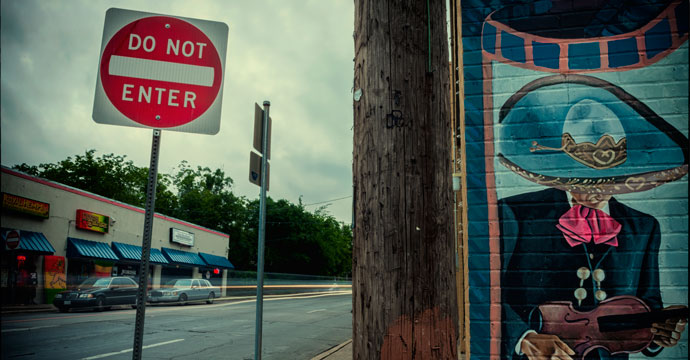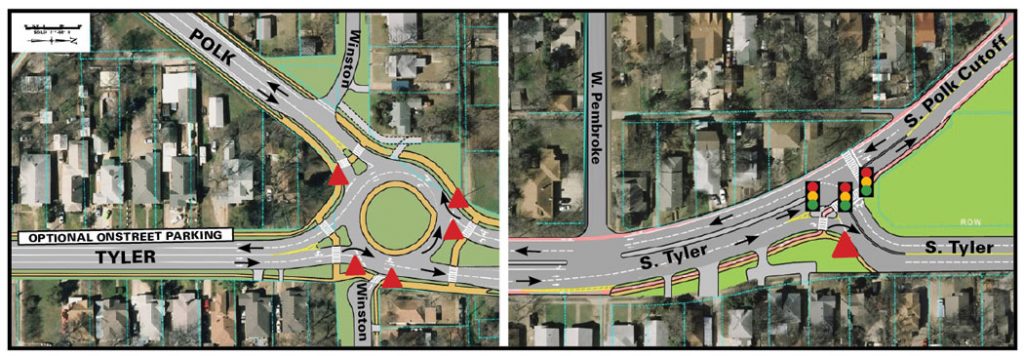
A view of Tyler Street from Seventh, where traffic moves too fast and wrecks are not uncommon: Photo by Danny Fulgencio
Sometime in the 1960s, the city of Dallas made Tyler and Polk into one-way streets as a way to move traffic quickly through Oak Cliff and to the suburbs.
Now that our neighborhood is a thriving destination, that one-way “couplet” should be reverted back to two-way streets to slow traffic, encourage walkability and draw more interest to commercial districts along the corridor.
At least, that is how City Councilman Scott Griggs and business owners near Tyler and Davis see it.
Farther up on Tyler, near Jefferson, the story is a little different.
Part of the two-way plan requires prohibiting on-street parking during peak traffic times. So from 7-9 a.m. and from 5-7 p.m., Tyler and Polk would lose about 20 parking spaces. This is in a commercial district where parking already is tight, business owners say.
Photographer Jesse Hornbuckle owns the 1930s retail strip in the 200 block of South Tyler. He located his photography studio in that block in the late ’90s, and he bought the building about 10 years ago. Now it is fully leased with a karate dojo, an art studio, a hair salon and Oak Cliff Games, a shop that opened in February, where customers can pay to play video games by the hour and hold fantasy card game tournaments.

The city proposes creating two-way streets by adding a roundabout on Tyler and Polk at Winston. A stoplight would join the streets at South Tyler.
“I’m all for progress,” Hornbuckle says. “But you’re creating a problem more than you’re solving a problem.”
Businesses near Tyler and Jefferson already are thriving, he says. They are locally owned businesses that made their own success.
“It’s not broken,” says Joshua Corona, who owns the Sweat Shop gym at 218 S. Tyler. “Don’t try to fix it.” He and his wife, Denise, fear that the change in parking will affect their business, which opens at 5 p.m. The parking restrictions will be in effect during their busiest times. The block has one or two streetlights that work only sometimes, Corona says, and most of his clients are women.
Corona thinks the city should scrap the two-way plan and instead spend the $3 million set aside for it to create more lighting on the street, build better sidewalks along the corridor and install other traffic-calming measures such as speed bumps or “your speed” signs that use radar to remind drivers how fast they are going.
Griggs has said he is working to find solutions to the proposed parking losses. And Hornbuckle says he would agree to the two-way plan if all the parking could be restored.
On the Davis end of Tyler, traffic moves too fast, and car crashes are not uncommon. Something has to be done to slow traffic there. But it’s unclear whether making it a two-way street is the right answer for both ends of the street.
Teresa Coleman Wash of the Bishop Arts Theatre Center says the two-way plan likely would make valet parking in front of the theater impossible.
“We’ve invested a lot of time, attention and resources here,” she says. “We hope the city will work with the people who have worked for this area to make it what it is.”





